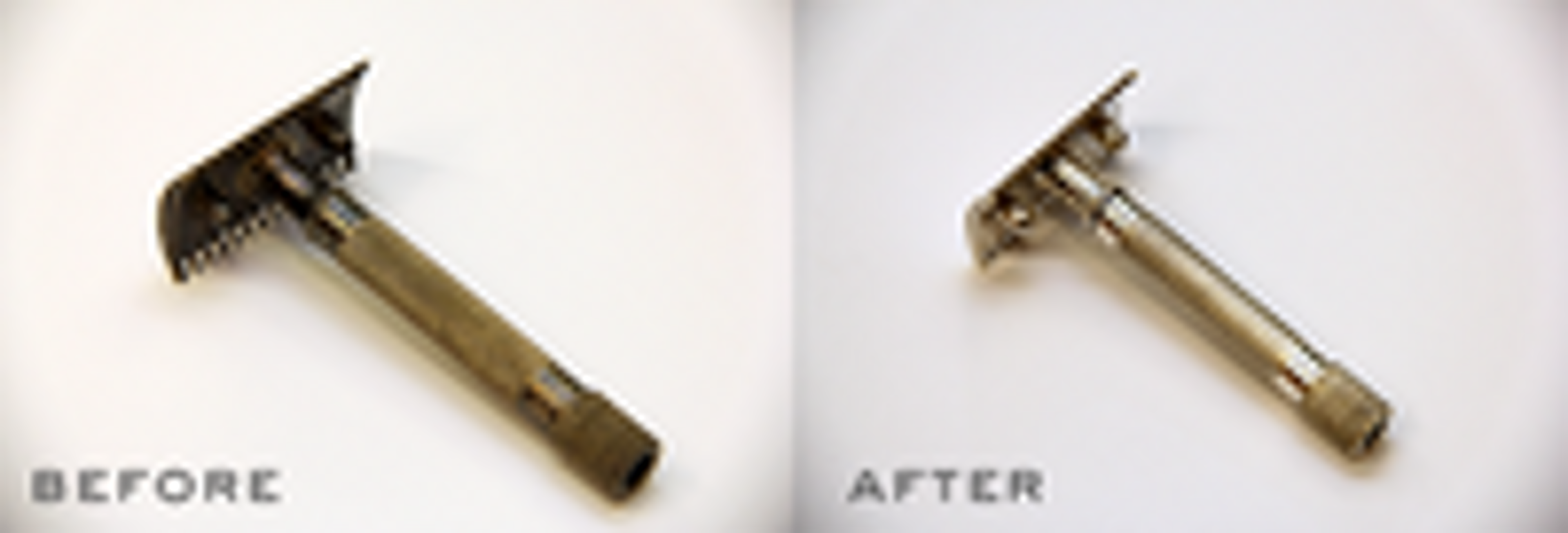
We get asked all the time how to safely remove tarnish on a silver razor at home. While many of the early Gillette razors are silver plated, they often have a layer of patina that has formed over the years. In the world of antiques, it is generally recommended to keep that patina on. However for daily shaving, this patina isn't the most hygienic or ideal.
One easy way to remove the patina, but keep the silver in-tact involves some cool at home science and the use of chemistry! In today's lesson, you'll need the following:
- Aluminum foil
- Baking Soda
- Hot boiling water
- A silver plated razor
- Glass or plastic dish
- A cotton cloth
Step 1)
Measure enough water to fill your glass or plastic dish and get it heated up on your oven range.

Step 2)
Line the bottom of your dish with aluminum foil, shiny side up and place the razor inside.

Step 3)
As the water comes to boil, add 1 cup of baking soda for every 1 gallon of water. Be careful as it may start to froth up!

Step 4)
Carefully pour this mixture into your dish. Get ready to watch that silver tarnish disappear!

Wait a few minutes until the razor and mixture cools off to take it out. At this point, your razor probably looks like this:

Now carefully just clean and buff off any dried up baking soda mixture off your razor with a cotton cloth. You should be rewarded with a brilliant, tarnish-free finish!

.
If there is a heavy build up, repeat this process until you are happy with the outcome.
Now for the cool part- the SCIENCE! Why does this work, you may ask?
| 3 Ag2S | + | 2 Al |
|
6 Ag | + | Al2S3 |
|
silver sulfide |
aluminum | silver |
aluminum sulfide |
The baking soda just serves as a chemical that will dissolve into charge-conducting ions in water- promoting the real chemical reaction that you see above. What happens is the ionic solution conducts electrons between the silver and aluminum, which helps to break the covalent bonds between silver and sulfur atoms. The sulfur atoms then migrate to the aluminum pieces where they’ll form new bonds oxidizing aluminum to create aluminum sulfide (Al2S3). For this to work, however, the silver and aluminum need to be able to conduct electrons between themselves and so must be touching.
The end result is a silver razor that has had its tarnish removed, but not its actual silver plating deposit. Very cool indeed! This process also works great on anything else made of silver - jewelry, watches, silverware or coins. Enjoy your new clean and hygenic razor, and shave on!
